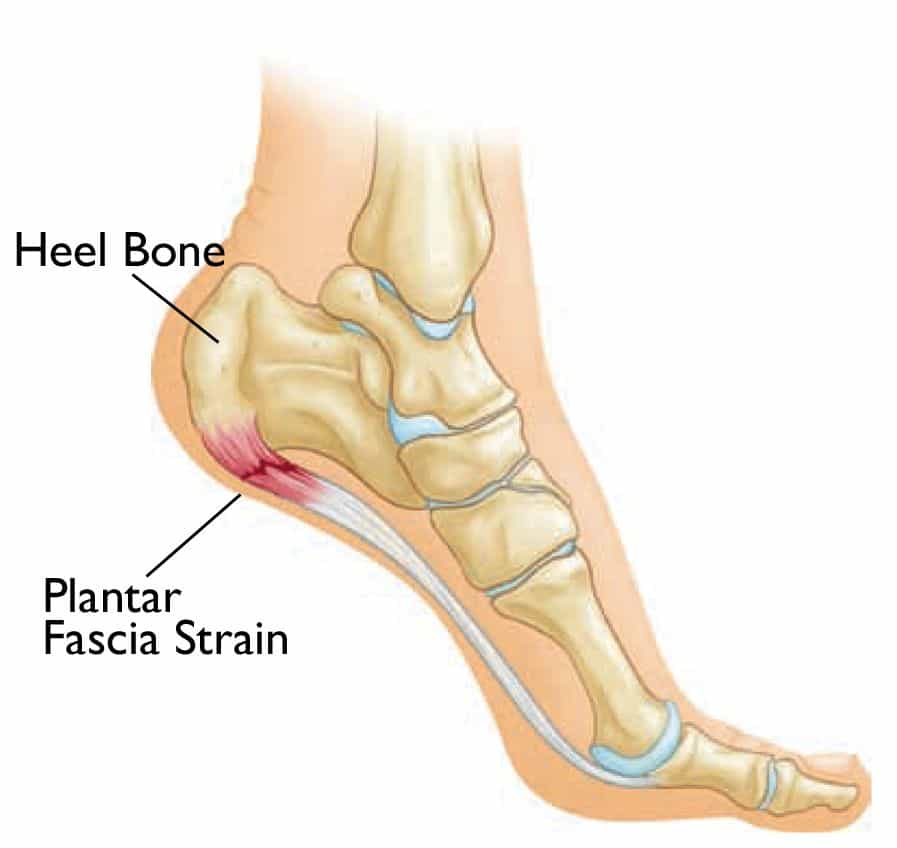
Plantar Fasciitis
What is it and how to get rid of it?
If you have ever had pain on the bottom of your feet when putting weight on your feet, you may have plantar fasciitis. In this article, we will talk about what plantar fasciitis is and how to treat it.
Plantar fasciitis occurs when the load and demand on the tissue exceeds its ability to heal. With an excessive biomechanical load on the plantar fascia tissue break down and degradation occurs.
The plantar fascia is a tissue that is made up of collagen. Not identical to ligaments or tendons, but somewhere in between. The tissue extends from the heel bone up the forefoot and close to the toes.
The plantar fascia plays a vital role in supporting the arch of the foot. It helps maintain arch and foot shape when performing simple activities like walking. The muscles, tendons, and ligaments also play a vital role in arch support. If the plantar fascia or muscles are not functioning properly or have some kind of pathology, plantar fasciitis can result.
Some risk factors that may contribute to developing plantar fasciitis include;
Reduced ankle range of motion
Calf tightness
Calf weakness
Tight foot muscles
Excessive weight-bearing activity like running (or recent significant increases)
Leg length discrepancy
High or low arches
Sedentary lifestyle
Signs and symptoms of plantar fasciitis include;
- Pain on the bottom of the foot, primarily close to the heel
- Pain on the bottom of the foot worse in the morning for the first several steps
- Pain on the bottom of the foot after prolonged sitting
- Usually only affects one foot
- Pain is typically sharp and specific and does not radiate
Imaging like an x-ray will not be helpful in diagnosing this type of problem. MRI and ultrasound can show some tissue thickening, but these are rarely used in the diagnosis and treatment of plantar fasciitis.
How to treat plantar fasciitis
Ensuring the muscles surrounding the plantar fascia are strong and stable is vital to recovery and will allow the plantar fascia time to heal. Muscles like the intrinsics of the foot as well as the calf and gluteals are important muscles to check. Acupuncture can also be helpful in reducing pain. Taping is another option that can externally offload the plantar fascia. Joint mobilizations may also be beneficial to maintain range of motion and foot mobility. If your therapist notes some foot dysfunction, a referral to an orthotist may be beneficial to get custom orthotics. Depending how long you have been experiencing pain, recovery can take weeks to months and modifying activities may be necessary to give the tissue time to heal.
Treatment at a glance:
- Acupuncture
- Stretching
- Strengthening
- Taping
- Orthotics
- Joint mobilizations
If you think you may have plantar fasciitis, do not wait to see if it gets better on its own. Getting treatment as quickly as possible will help quicken up healing and reduce your downtime! One of our therapists would love to help you get back to doing the things you love.
